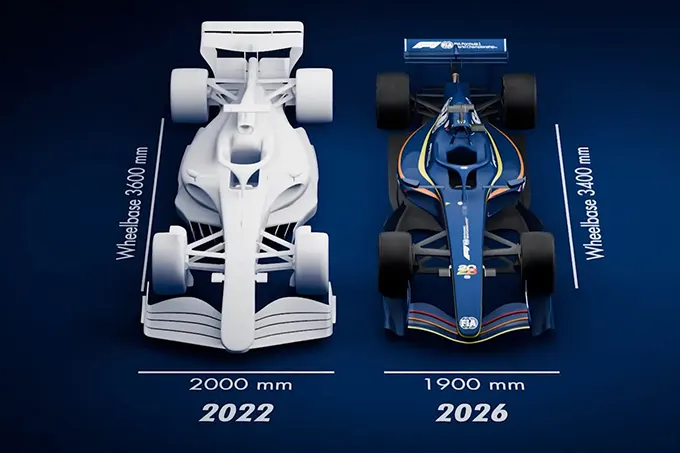F1’s 2026 regulations raise alarms with new electric and weight standards impacting race dynamics.
Following Max Verstappen, several paddock figures are increasingly expressing skepticism about the 2026 regulations.
One of the key measures of the new rules is particularly targeted: in 2026, half of the total power will be provided by the deployment of electric energy through the MGU-H. The other half will be supplied by a ‘classic’ internal combustion engine.
David Coulthard believes that this unprecedented distribution in the sport’s history will have direct repercussions on F1 driving.
“It changes the profile of the lap,” asserts the former McLaren F1 driver.
In what way?
“I remember years ago, when I was a driver, I was asked what I thought about the regulations. I said I thought nothing of it and that it wasn’t my job at the time…”
“I used to think: it’s up to Adrian Newey, the technical team, to think about the regulations. It’s up to me to think about what I can exploit, the scenarios in which I can gain an advantage. I focused on the areas I could influence.”
“That said, I have a concern that I believe is shared by engineers and drivers: if we move to 50/50 between the electric motor and the combustion engine… it changes the profile of the lap and how the cars are developed.”
“Traditionally, your Vmax is at the end of the straight and then you brake into the corner.”
“However, with the 2026 regulations, it might happen that they accelerate, then begin to decelerate towards the braking zone, so that your Vmax occurs somewhere in the middle of the straight, which is a different way of racing.”
“All drivers will participate in the race, the best will win, the best teams will win. But the way we perceive it will change.”
Drivers such as Daniel Ricciardo, known for their late braking, could be at a disadvantage, potentially leading to fewer overtaking manoeuvres.
“If they are slower in the braking zone, they’ll brake later. Hence, we might see a shorter braking distance, which could hinder overtaking—Ricciardo’s signature dives on the inside may not occur,” suggests the theory.
2026: A weighty issue…
Mark Webber, the former Red Bull driver, points to another concern: the weight of the cars!
The 2026 F1 cars will indeed be lighter by 30 kilos compared to current models… but they will still weigh around 768 kilos (which is still 40 kilos more than in 2014).
It’s a problem not only for performance but also for safety, highlights the Australian.
“The weight is a significant issue; I mean, they are simply too heavy.”
“All drivers would prefer lighter cars, and when you add an extra 20 kilos, you need to add more weight to make it safer.”
“30 kilos less is like a string on a tennis racket. It’s nothing. So, we really need to try and remove 150 kilos from the car in the future.”
“These F1 cars are no longer as safe. Drivers are not as secure when the cars are heavier.”
“I had an accident in the same corner with a light Formula 1 car and a heavy sports car in Brazil and at the impact, the extra weight isn’t really helpful because drivers are still part of that inertia. A lighter car is much safer.”
Jenson Button, however, does not believe that reducing the weight of the cars is realistic, though he fondly recalls a time when F1 cars weighed no more than 600 kilos. He reminisces about driving the Williams FW22 (from 2000) at Silverstone during the last Grand Prix.
“With hybrid engines… it’s very challenging to make the cars lighter.”
“Obviously, the hybrid system is heavy, but it also necessitates lengthening the car. It’s much larger because of that.”
“Back in the 2000s, we were at 600 kilos with the driver, that’s over 200 kilos less. Normally, F1 teams say that 10 kilos equate to three tenths. So, you can do the math, that’s a significant amount of lap time.”
“The extra weight means that these drivers had to add a lot of aerodynamic downforce, a lot of power to be faster than the cars of that era.”
“The tyres are very stressed, which means we struggle a bit with the tyres.”
“I love the fact that we are pushing technology and that’s what F1 represents, but when you see these cars from 2000 run and hear them, it brings a huge smile to your face.”

- You may also like>Audi F1 Enlists IndyCar Luminary as Reinforcement?
- Following us on>Facebook and>Twitter
Electric Shift and Weight Woes Under 2026 F1 Spotlight. Electric Shift and Weight Woes Under 2026 F1 Spotlight. f1 2024 Electric Shift and Weight Woes Under 2026 F1 Spotlight
